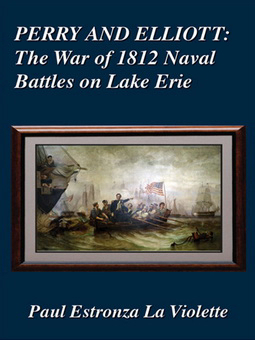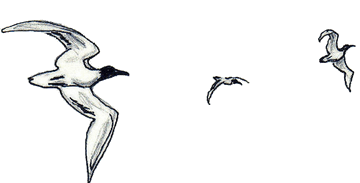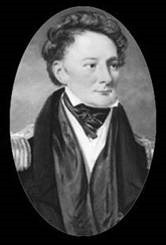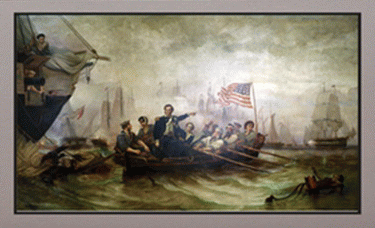Perry and Elliott


The British Blockade of the American Fleet and the Building of the American Fleet
Commander Robert Heriot Barclay
Building A Fleet In The Wilderness
Master Commandant Oliver Hazard Perry
Perry Crosses The Bar
Master Commandant Jesse Duncan Elliott
The British Situation at Detroit: Part 1 - The HMS Detroit
The British Situation at Detroit: Part 2 - The Indians
Put-In Bay
Part 1: Naval Guns and Ammunition (Circa 1812)
Part 2: The Guns and Gun Crews of the British and American Fleets
PART 2
The Battle for Lake Erie and its Immediate Aftermath
The Battle Begins: The Morning of 10 September 1813
The Battle Ends: Post Noon,10 September 1813
The Battle's Aftermath:
Part 1: The Battle of the Thames
Part 2: Perry’s Departure / Erie Under Elliott
PART 3
Perry and Elliott
Perry and Elliott: The Dispute Continues and the Death of Perry
The Final Battle: Barron and Decatur, the Perry Papers and Elliott’s Death
PART 4
Appendices and Acknowledgments
Documents Related to the Differences Between the Late Commodore O. H. Perry and Captain J. D. Elliott
10 September Battle Report of Commodore Oliver Hazard Perry to Secretary of the Navy William Jones
Letter of Commander Robert Heriot Barclay to Sir James Yeo
Narrative of the Proceedings During the Command of Captain Barclay of His Majesty's Squadron on Lake Erie


It was late in the day of 30 July 1813 and the Royal Navy Commodore of a squadron of lake-built British naval vessels was about to make a decision that would affect the British and American balance of power in the Great Lakes.
Commander Robert Heriot Barclay stood at the starboard taffrail of his flagship, the 16-gun HMS Queen Charlotte, and looked into Presque Isle Bay.
Even he would admit that it was as good an anchorage as could be found for building a ship on Lake Erie.
It had ample good oak timber, a dedicated community with poor, yet passable, roads to Pittsburgh and beyond for iron and other essential supplies. And, as he viewed the new, fully manned block house at the harbor entrance and another slightly above it to the southeast, it had ample militia to guard the ships being built within the Bay.
The block house near the entrance of the Bay had already shown its teeth when, on a previous occasion, one of the British squadron ships had come too close to the Bay’s entrance.
Today, the waters were relatively calm and the cant of the Queen Charlotte as she moved eastward across the harbor entrance, pushed the starboard rail low and Barclay could see far into the harbor. Bracing himself against a convenient stay, he raised his glass and looking at its inverted image, studied the several vessels sitting deep inside the harbor.
It was all very much as he had seen it the day before and the day before that. On his arrival on 20 July, Barclay had found that the reports of British sympathizers were true. He could see that Americans had launched both of their reported newly built brigs, and had spent the time since launch arming and preparing them for combat.
Small boats could be seen moving about the two brigs, no doubt loading supplies and equipment. Near the two were five lesser war vessels, (mostly small merchant vessels), Somers, Trippe, Ohio, Caledonia, and Amelia. These normally would present more of a nuisance than a serious threat, but working in combination with the two new brigs, their attendance would generate a formidable force.
The five small ships had been moved from the American base at Black Rock on the Niagara River to Presque Isle Bay earlier in the spring. A morning fog had saved them being detected by a British naval unit patrolling that area of the Lake.
Upon arrival in Presque Isle Bay, Amelia had been declared unseaworthy and used for replacement riggings. But the remaining four had been quickly outfitted to become ancillary units of the American naval force.
Barclay gave a low grunt of displeasure.
The two newly-built armed brigs and the converted merchant vessels formed a menacing flotilla and were the reason he was laying siege to the harbor for much of July.
Barclay knew with dread that the American fleet must not be allowed to come out of the Bay. Their presence on the Lake would upset the balance of the two opposing naval forces
He also knew he had to wait upon the completion of another British brig, the HMS Detroit.
It was being built at the Fort Malden shipyard 200 miles away at the northwest corner of the lake. Upon completion of the Detroit, the two opposing forces on the lake would be equal. However, that was sometime in the distant future.
Meanwhile, he was being forced to lay siege to the harbor entrance of this bay and prevent the American naval unit with its two new brigs from coming out and threaten British supremacy of the lake.
Fortunately, he did have help in doing this.
Lowering his glass to view the entrance to the harbor, Barclay could see traces of a race of water emptying the bay. It was not a strong flow, the water at this time of the year was not that much, but the surface presence of the flow indicated that the sand bar across the harbor mouth had a channel to allow excess bay water to leave the Bay.
It was not a deep channel. He calculated that the new American brigs drew approximately nine feet of water. At this dry time of year, the channel at its deepest was less than six feet. For the purposes of his blockade, the brigs were essentially trapped inside the harbor.
It was an impediment he would have to rely on till the Detroit was built
Robert Heriot Barclay was an experienced naval officer. He had been a midshipman on Lord Nelson’s Flagship, the HMS Victory in February 1805.
Upon his later transfer to the HMS Swiftsure, he received promotion to acting lieutenant and confirmed in rank just before the Battle of Trafalgar. Shortly after the battle, HMS Swiftsure was towing the captured French ship Redoubtable, when the capture began sinking. Lt. Barclay’s quick action was credited with saving 170 of her seamen before she sank.
During 1808 and 1809, he repeatedly showed his bravery in the English Channel during the British blockade of the French coast. In an action in 1809, while in command of armed boats attacking a French convoy, he lost his left arm in the close action.
On his recovery, he was sent in February 1813 to the North America arena and ordered to conduct a group of officers to Kingston in Upper Canada. Upon arrival in Kingston, he was given command of all British naval forces on the lakes. This lasted only ten days when the prestigious command was transferred to Captain Sir James Lucas. Who almost immediately, sent Barclay to Amherstberg on the far western end the lake.
Once there, he was to assume overall command of the British naval forces on Lake Erie.
Barclay reached Amherstberg in mid-June after a difficult journey overland. At Amherstberg, he found himself in charge of a naval force that, while superior to the American naval forces on the Lake, suffered from a serious lack of naval stores and trained seamen. His letters addressing this lack to his superiors on the eastern end of the Lake produced no relief. (For particulars see Appendix D.)
Even worse, he found through a network of various British sympathetic people on the Lake, that the Americans were in the process of constructing naval vessels equipped with experienced seamen that could overcome Barclay’s slight edge in ships, naval guns, and seamen.
Now, mulling these problems, Barclay held tightly to a nearby stay just as he heard the ship’s bell ring out eight bells.
With this age-old naval announcement of noon and its inherent naval meaning of the start of a new day, he braced himself for the various reports of the squadron’s condition, especially as to supplies of his ship as well as that of the other ships in the squadron.
His worry was that these reports would not be good. Mostly his immediate worry was that his squadron was badly in need of supplies.
Barclay sighed and calling for his ship master, he gave the order to lift the blockade during the late watch, and at that time to steer the squadron north across the lake to the British base at Dover.
At a dinner the following night in Dover, it was said that he responded to a complimentary toast, with the statement,
“I expect to find the Yankee brigs hard and fast on the sand bar at Erie when I return, in which predicament it will be but a small job to destroy them.”
These were ominous words.

In the early stages of the War of 1812, the British controlled Lake Erie, an important water road to the Northwest Territories. It quickly became urgent to the United States to take control of the Lake. To do this, the United States Navy began building a small fleet of warships in the confines of Presque Isle Bay, in Erie, Pennsylvania.
The burgeoning fleet was placed under the command of Master Commandant Oliver Hazard Perry. British Commander Robert Heriot Barclay, realizing the danger the new fleet presented, began a naval blockade of the Bay. However, under the cover of a fortuitous fog and using specially built flotation boxes, Perry broke free of the blockade.
Once free, Perry began a chase to the west, clearing the Lake of British ships as he went. The chase ended eventually opposite Amherstberg, a large British military base. The positions of the two protagonists were now reversed. With Perry, the blockader and Barclay firmly blockaded, without needed supplies, especially food. Perry waited for the British to move.
Finally, Barkley came out to battle in an area of the Lake just west of Put-In-Bay, Ohio. The battle itself was fierce and had an odd twist. Perry had at his second in command: Master Commandant James Duncan Elliott. Elliot, unknown to Perry, hated his position as second in command and wanted Perry killed, so that he would assume command, defeat the British and thus, gain all the glory!
Elliot miscalculated; it did not end up that way.
